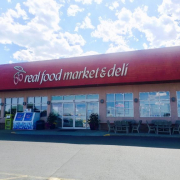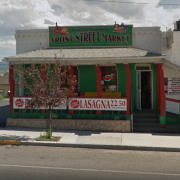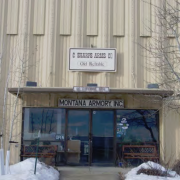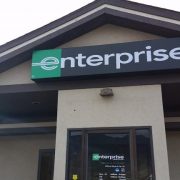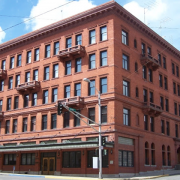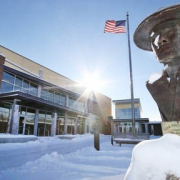Real Food Store
Energy costs in grocery stores can be quite high. But thanks to an energy audit performed by the Montana Resource Efficiency Program (MREP), an organic grocery in Helena has a variety of options to reduce those costs.
The Real Food Store is an organic grocery and deli, located in Helena, Montana. The one-story retail facility has an open floor plan that includes a group of offices, a break room, and a meeting room. The building consumes electricity and natural gas at a higher rate in summer months, as shown in Figures 1 and 2. This indicates that cooling is the largest energy consumption source.


HVAC Recommendations
The Real Food Store building’s HVAC systems consists of five rooftop units, or RTUs, each designed for different areas of the store. These rooftop units use natural gas to heat and electricity to cool with the condensers integrated into each unit. The ductwork is exposed and not insulated, and the addition of insulation could increase efficiency. Insulating the east and north perimeters of the crawlspace walls could also negate heat loss in winter months.
There are several employee comfort issues in the office area of the store, which is very cold in winter months. This problem can be contributed to a bad thermostat location or improper zoning for the thermostat. It could also be the result of incorrect venting, the need for weatherization of windows in the office areas, or a large return grille that is located directly across from the offices. MREP strongly recommended a retro-commissioning study to determine the source of uneven heating and cooling in this area.
The older rooftop cooling units do not have energy-saving options, such as variable frequency drives (VFDs) or electronically communicated motors (ECMs). The store can retrofit the units with VFDs and ECMs to allow the efficient motors to work at speeds associated with demand.
Refrigeration is the largest cost for most grocery stores. There are a couple options that can help diminish the cost and energy use of the store’s refrigeration system. These options are expensive to implement and are recommended only if a complete overhaul of the system is necessary in the future. If a new design is required for the condensers, we recommend constructing a racking system for the condensers. This would combine the condensers into one control room and run them in parallel to maximize the energy efficiency.
Hot-water heat recovery is another energy-efficiency measure to consider. Grocery stores have a great opportunity to use the heat rejected by the condensers for domestic hot water heating. Hot-water heat recovery requires additional plumbing and equipment but can save a large amount of energy by preheating the incoming water before reaching the hot water heater and can save 300 therms of natural gas a month. This energy-saving measure could be implemented without an overhaul of the refrigeration system.
Domestic Hot Water Heating Energy Recommendations
According to the deli manager, the Real Food Store serves on average 170 hot meals per day and 170 cold meals per day. It is estimated that the store’s deli uses 2,890 gallons of hot water per day[1]. This adds up to approximately 500 therms of natural gas a month, costing upwards of $375 per month for hot water heating alone. Below are some recommendations for reducing this cost:
- Install low-flow kitchen and bathroom faucets
- If the dishwasher, ice machine, or steam cooker needs replacing, invest in an ENERGY STAR-certified model
- Install high-efficiency pre-rinse spray valves for dishwashing
[1] ASHRAE (2011). Hot-Water Requirements and Storage Equipment Sizing. ASHRAE Handbook: HVAC Applications (pp.50.11-50.13). Atlanta, GA: ASHRAE.
Lighting Recommendations
The store’s lighting consists of metal halides, fluorescent tubes, CFL, incandescent, and PAR 30 bulbs. MREP engineers developed an LED conversion design with the following savings and payback:
- LED Cost: $8,567
- Utility Incentive: $2,120
- Net Cost: $6,447
- Annual Bill Savings: $3,570
- Annual Energy Savings: 24,930 KWH
- Simple Payback with Energy Savings: 1.8 years

